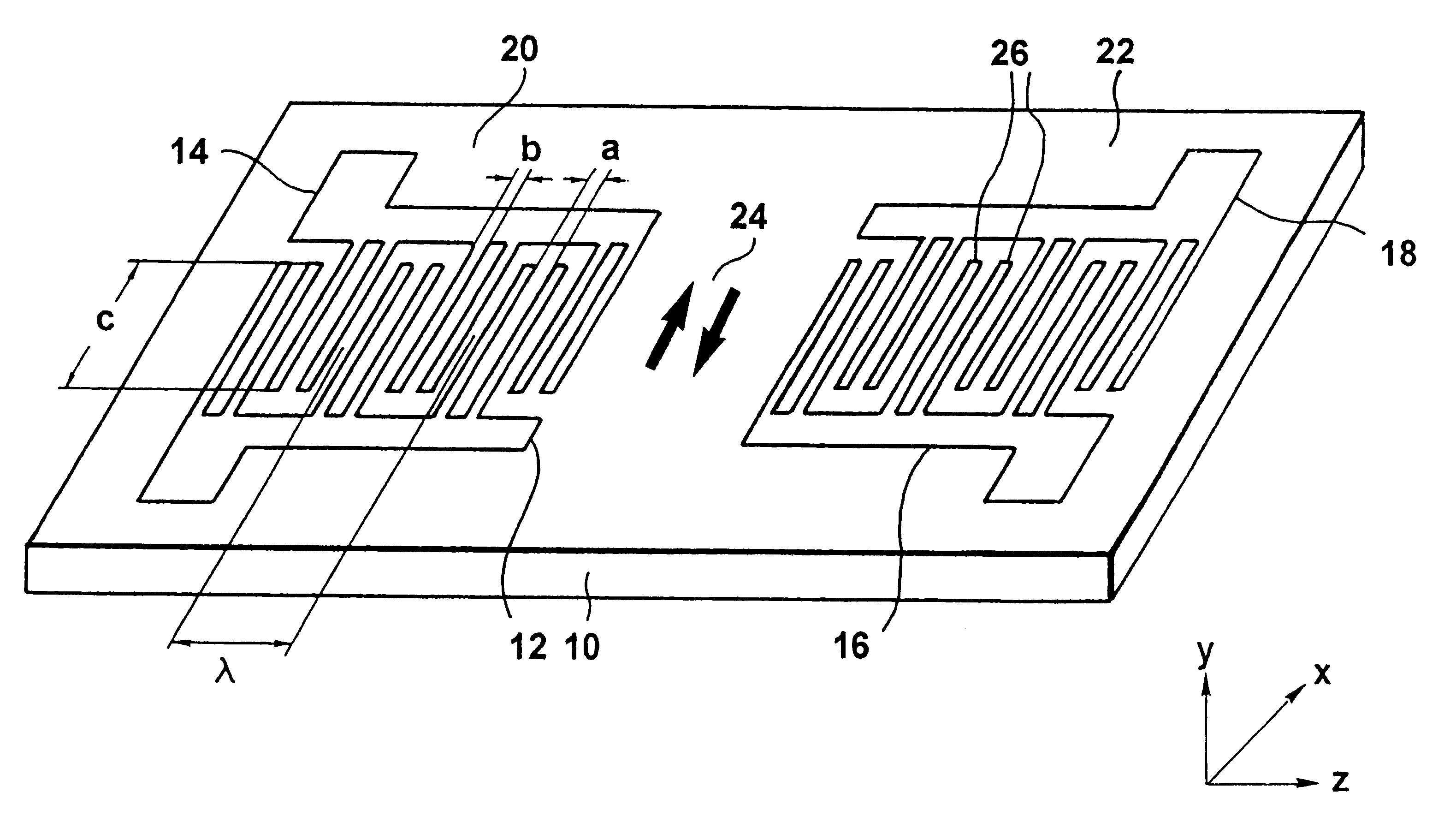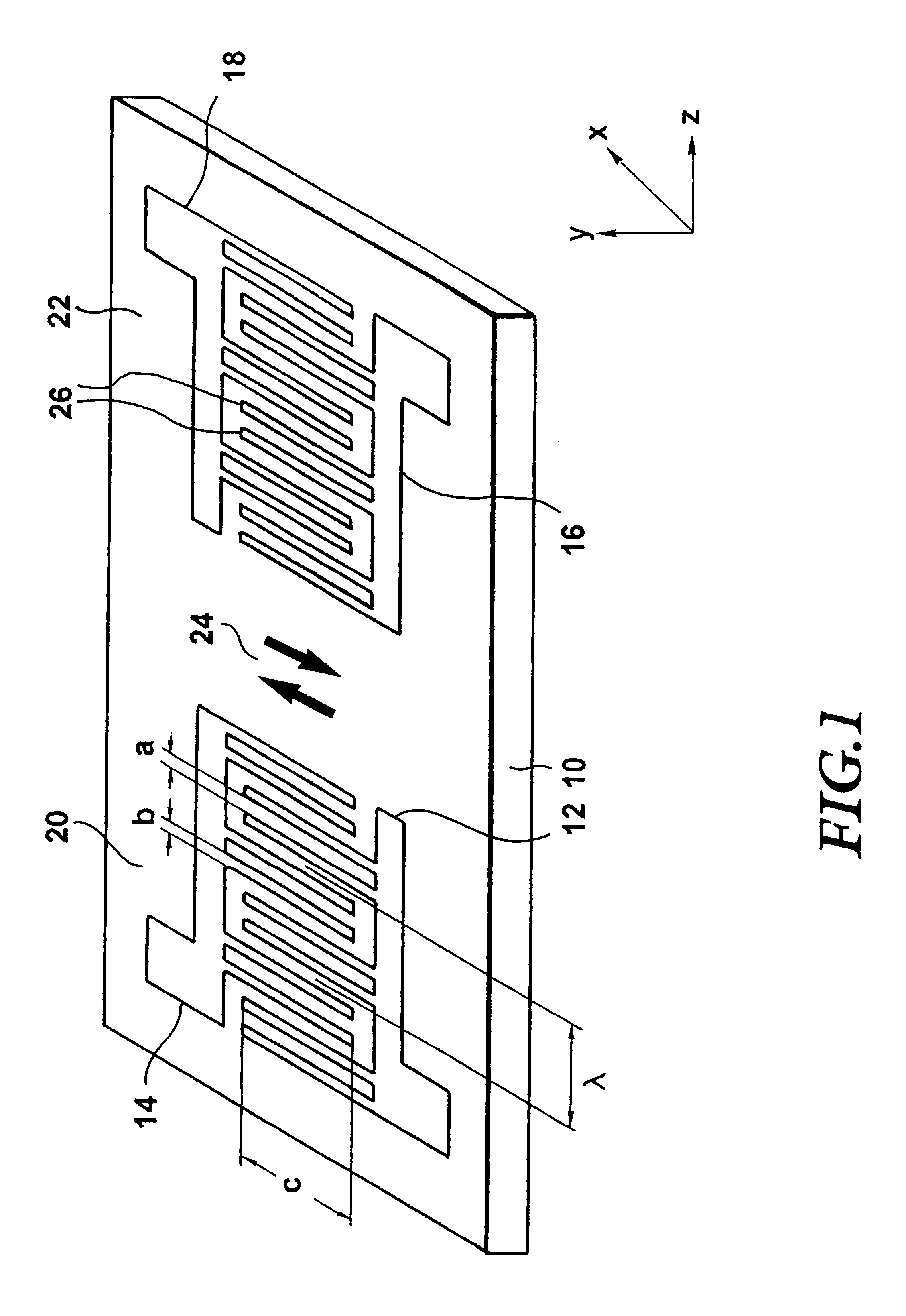Surface wave liquid sensor
a surface wave and liquid sensor technology, applied in the field of liquid sensor, can solve the problems of large disturbance of the measurement effect, high energy loss, and generation of compression waves, and achieve the effect of reducing disturbances, reducing disturbances, and increasing the measurement sensitivity to the viscosity of liquids
- Summary
- Abstract
- Description
- Claims
- Application Information
AI Technical Summary
Benefits of technology
Problems solved by technology
Method used
Image
Examples
Embodiment Construction
In the following a general description of the surface-wave component shown in FIG. 1 will be given in brief. A piezoelectric substrate 10, e.g. a y-rotated quartz crystal, has comb-shaped electrodes 12, 14, 16 and 18, in thin-film technology e.g., applied to it. The electrodes 12 and 14 form a first interdigital transducer (IDT) 20, the so-called transmitting interdigital transducer (transmitting IDT), while the electrodes 16 and 18 form a second interdigital transducer 22, the so-called receiving interdigital transducer (receiving IDT). The substrate can consist of any sort of piezoelectric material which is suitable for the excitation of shear waves. Preferably a y-rotated quartz crystal with a quartz crystal cut between 35.degree. and 40.degree. is used.
When a high-frequency alternating voltage is applied to the transmitting IDT 20, electroacoustic waves, represented schematically in FIG. 1 by the arrows with the reference numeral 24, are generated because of the piezoelectricity...
PUM
| Property | Measurement | Unit |
|---|---|---|
| excitation frequency | aaaaa | aaaaa |
| insertion loss | aaaaa | aaaaa |
| insertion loss | aaaaa | aaaaa |
Abstract
Description
Claims
Application Information
 Login to View More
Login to View More - R&D
- Intellectual Property
- Life Sciences
- Materials
- Tech Scout
- Unparalleled Data Quality
- Higher Quality Content
- 60% Fewer Hallucinations
Browse by: Latest US Patents, China's latest patents, Technical Efficacy Thesaurus, Application Domain, Technology Topic, Popular Technical Reports.
© 2025 PatSnap. All rights reserved.Legal|Privacy policy|Modern Slavery Act Transparency Statement|Sitemap|About US| Contact US: help@patsnap.com



